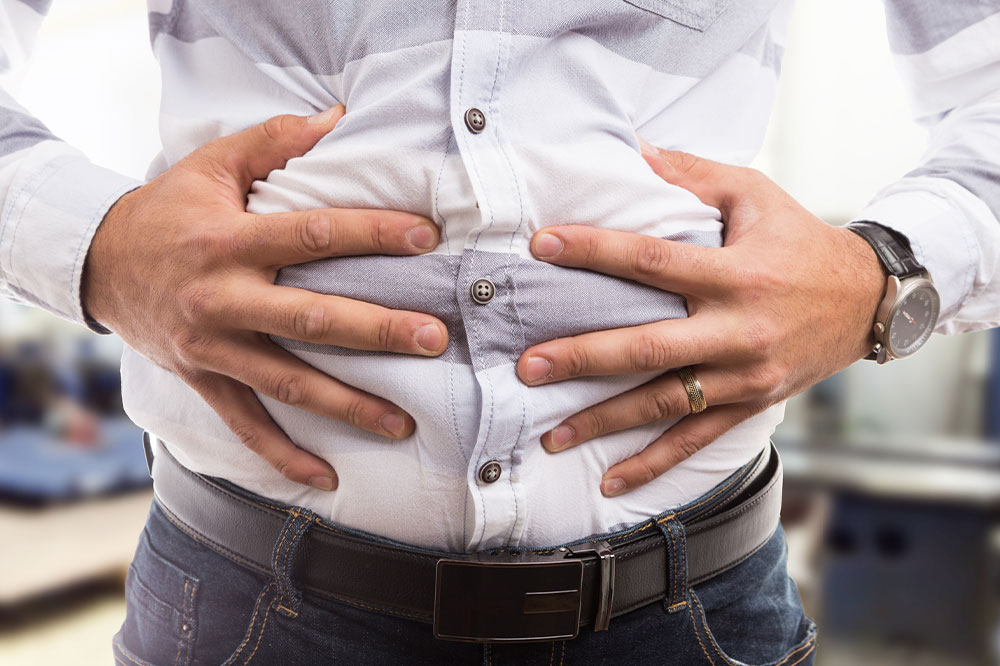
8 signs of gastrointestinal problems due to a high sugar intake
Sugar is an incredibly common ingredient; people enjoy its use in cakes, sodas, and more. However, it isn’t uncommon for the ingredient to adversely affect our overall health, especially if one is at risk of diabetes. Consuming excess amounts of sugar may lead to a range of problems, including those with the digestive system. Thus, here are eight early warning signs that may indicate complications with gastrointestinal health due to too much sugar intake.
Bloating
People may experience bloating for various reasons, including swallowing air when they chew on foods like gum, overeating, and even menstruation. However, one may also experience this symptom if they consume too much sugar. While absorbing water is the primary job of the large intestine, too much sugar may draw water from the intestine or prevent its absorption. As a result, one may feel bloating or heaviness in the gut. This symptom should be checked by an expert, especially if it persists.
Gas
Another common symptom that most individuals may experience is gas. When an individual consumes too many sugar-rich foods, the body might not be able to break down the excessive amount of sugar. As a result, the food may lie around in the large intestine, where it ferments. The sugar may also move slowly through the large intestine, feeding yeast and unhealthy bacteria along the way, which triggers a buildup of gas. People who have gas due to too much sugar intake may notice other symptoms like spasms, pain, and cramping around their stomach.
Diarrhea
Diarrhea is one of the most common symptoms people experience because of poor gastrointestinal health. It results in stools turning loose and watery and may also compel one to visit the bathroom several times. Diarrhea may last for one or two days or weeks, based on what has caused it. This symptom has multiple triggers, including Crohn’s disease, celiac disease, and chronic diarrhea. However, even the consumption of too much sugar may result in diarrhea. The sweet ingredient may stimulate the gut to release water and electrolytes, loosening bowel movements. So if one experiences the sign without the presence of an underlying disease, they should speak to an expert about reducing their sugar intake.
Sugar intolerance
Intolerance to sugar may occur when the digestive system cannot produce an enzyme to break down properties like sugar. So when an individual consumes foods rich in sweet ingredients, it may inhibit digestion and leave a high amount of fructose in the intestines. Furthermore, the poor digestion of sugar may lead to gastrointestinal bloating and discomfort. If one suspects that they are intolerant to sugar, they must reduce its consumption and speak to an expert about alternative ingredients for their food.
Liver damage
The liver is an essential organ for digesting foods and getting rid of harmful substances from the body. But like all organs, it is susceptible to damage due to a few factors, including genetics, infections, and problems with the immune system. But if one has none of the above complications and still experiences trouble with their liver, it could be a sign of consuming too much sugar. The organ is responsible for stimulating digestion, which means that fructose is processed here. So if an individual consumes too much sugar, the sudden rush might overload the liver and result in potential damage. This may impair one’s regular digestive process. A damaged liver could eventually fail and turn into a life-threatening condition, which is why one must get it diagnosed and treated at the earliest.
Eating more than usual
Wanting to eat more occasionally is okay. However, if one finds the urge to eat more than usual on a regular basis, it could be a sign of consuming too much sugar. The composition of sugar prevents the stimulation of insulin. The lack of insulin may then result in the poor suppression of ghrelin, a hunger hormone. Furthermore, the phenomenon even prevents the stimulation of leptin, which compels one to eat more on regular occasions. Consumption of more food than required could lead to health conditions, including reduced HDL and heightened LDL, increased blood sugar, high blood pressure, and elevated triglycerides. Therefore, if one finds themselves feeling hungrier than usual, even after a hearty meal, they must speak to an expert to check for the underlying issue.
Inability to lose pounds
The excessive consumption of sugar may cause a gain in pounds, but it may also keep one from losing what they have gained. Consumption of too much white sugar could make one feel less satisfied after a meal, which makes them more likely to consume higher calories each day. Higher sugar intake may increase insulin levels and cause the body to conserve fat rather than burn it away. The unhealthy property, known as visceral fat, is stored in the abdomen, which is one of the most difficult fats to get rid of. So if one finds it difficult to lose the extra pounds even after regular strenuous workouts, it could indicate that they consume too much sugar. They should speak to an expert about this sign, as leaving it undiagnosed could lead to health complications like diabetes and heart disease.
Acid reflux
Someone who consumes sugary foods is more prone to experience symptoms like acid reflux. Consuming too much sugar may hamper the function of the pancreas, which usually produces enzymes to digest the sweet property. This may lead to bacterial overgrowth and imbalance in the intestines, which could affect the proper absorption of nutrients. As a result, the digestive tract might have higher acid levels. Excessive amounts of acid may flow back into the esophagus, known as acid reflux. So if one experiences this symptom without an underlying health complication, it could result from consuming too much sugar.


